Which Of These 2 Community Development Approaches Is The Best?
And which one does your project take?
Based on my research and lived experiences, there are two main approaches to creating an intentional community: developer-led and community-led.
Let’s brandish the forks and dig into each one.
How this came about
Distinguishing the developer-led approach and the community-led one emerged from conversations with fellow village designer, Nico Alcala, while deciding how to teach village building.
It was apparent that his focus was on buying the land and building the product, whereas I had observed several entrepreneurs starting communities in this way and hitting a wall, because they were so used to lone wolf entrepreneurial pursuits, and they thought building community would be no different.
My own assumptions and bias was that village building was groups of people who had found shared purpose and went through the process of designing a place for themselves, but often limited in one way or another.
I started to investigate what the differences between the two approaches might be, and if one was inherently superior.
Developer-Led
A developer-led project is typically led by 1-3 people acting in the visionary role.
Despite the name, it does not necessarily mean the project is spearheaded by a real estate or land developer, although there are plenty of those.
Developers may or may not plan to live in the community themselves.
While most developer-led projects that I bother with have a genuine intention to create authentic sustainable community and innovate in regeneration, most of their efforts operate from their professional, not personal, purview.

Initiators of these types of projects tend to come from a business, finance, or design background. They are highly skilled at infusing this expertise into the village development process.
Accordingly, their default focus is on building the physical infrastructure over the social infrastructure, perhaps because it’s the easiest and most logical.
Take la tierra, Nico’s project, for example. He’s part of re:build and is infusing the project with mindful consideration of regenerative principles. At the end of the day, he is the main visionary.
These projects are generally larger scale, because they have a big vision and a developer mindset. The focus is often on the infrastructure, the modernity, the masterplan, and the physical building.
Don’t think this is you? Look a little harder. If you are the sole/primary owner and you are focusing on designing, buying land, and building more than community engagement, sensemaking, and recruiting co-founders / potential community members, you probably fall into this category.
Even the village project I am incubating right now in Italy is currently in “developer-led” mode, until we secure the land and start using community engagement techniques.
Other examples: Regen Villages, Abundancia, NewEarth Laguna, Alegria
Pros
Can move quickly and efficiently to establish regenerative community models at the speed we need these physical spaces to be built in this world
Can impose a very distinct vision without compromise
Can focus on the physical, procedural process of building a community
Can move larger amounts of capital, especially when working with traditional investment avenues and business acumen
People rally around inspiring, charismatic leadership and occasionally enjoy offloading onto the developer figure
Cons
Harder to mobilize others; May face the “build it and they will come” illusion, failing to attract others to live in the community project once its built
May lose steam without co-founders to motivate you
Can result in a place that lacks soul and character, or that isn’t multi-disciplinary
Inherent power dynamics that are hard to compensate for
Ostensibly not as much control over who you live with (from the community member perspective)
Can result in something more like a planned community than an intentional community
Community-Led
Community-led development is a process initiated by a group that has decided they want to live together. The physical space may already exist, but the important distinguishing factor is that they are people-first instead of place-first.
In this approach, members determine the community's identity and objectives.
The focus is often on the lifestyle, culture, cooperation, relationships, and what community members have in common.
These communities default to a more emergent process (or sometimes lack of process), and move more on an intuitive sense than an imposed sequence of events.
This can be good for responding to community member needs, but may lack an eagle-view plan.
The success of these projects hinges on the community’s skillset and ability to create deep alignment early on. Saves you from finding out later that they aren’t your bread and butter.
A community-led development with a strong unifying purpose is more likely to endure.
Take
’s community, Vitalia, for example. They all rally around longevity, biohacking, and regenerative medicine. They are a decentralized effort to build more longevity-focused startup cities around the world, and they are quite successful in distributing responsibility among their members.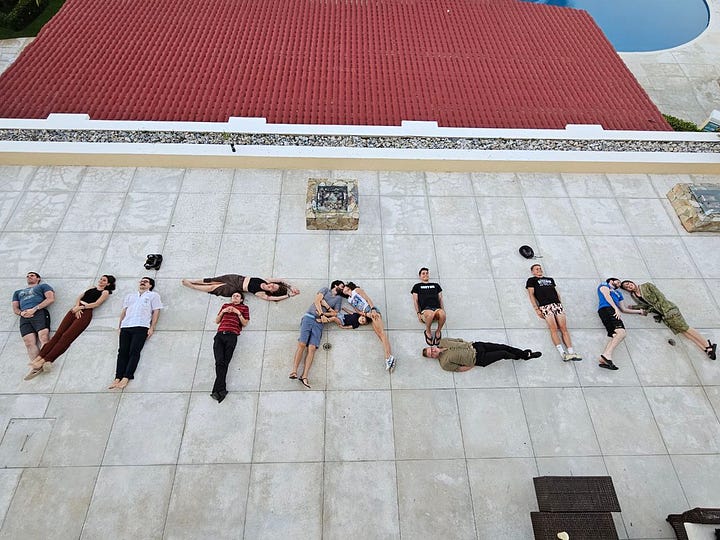
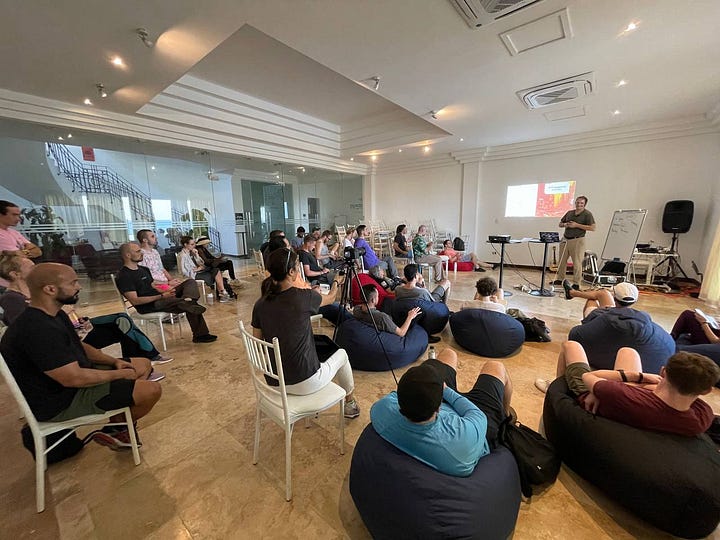
This shows how community-led doesn’t have to be “unprofessional” or lacking technical skills, but can source a powerful network effect of talent and resources.
Other examples: The Farm, Earthaven, Lost Valley/Meadowsong
Pros
Tends to the relational process of building belonging in a community
Community members know and bond with other members before living together
More people involved can create a resilient network of capital; more people can equal more pooled resources and labor
The result is a community that is very specific to the members’ needs
Can move larger amounts of capital when sourcing through their network, and may find more creative, unusual ways to finance their project
Distributed ownership, more likely to have participatory processes
Cons
Takes more time to align participants, although this pays off later if the combination of people is right
Perhaps more led by idealism, which makes it hard to manage expectations with reality
Group process is emotionally laborious
May result in lack of diversity if the focus on like-mindedness is too strong
Has the potential to veer into the unprofessional, DIY zone
In an effort to be 100% horizontal in governance, decision making can become chaotic without clear leadership, or conversely too many strong-willed leaders attempting to steer the ship

So which one is better?
You probably wish it was as simple as “If you want to go fast, go alone. If you want to go far, go together”.
That proverb doesn’t apply that accurately here, because I’ve seen both approaches establish thriving communities that mature past the normal inflection point.
Yet, there may be a 3rd approach.
What I am curious to answer is how we can blend the two approaches to get all of the pros and none of the cons.
Typically dev-led projects stall when it comes to getting people, and com-led projects stall when confronted with the complexities of land development.
So here is the core question to this article:
Is it possible for a land project created by a central entity or developer to result in an ‘authentic’ community?
My intuition is yes, given the right inclusion, empowerment, and participatory processes.
Imagine that both approaches could be used — each in its area of strength. This could address the issue shared by
in a comment on my last post:A developer-led approach could be used to move mountains in the physical construction, boring permits/legal, and financing, while a community-led approach could focus on creating belonging, emotional bonds, and a sense of self-determination in the group.
Here’s a rough sketch of how I think these approaches would interrelate through the various phases of building a village:
At La Ecovilla, they are in a very unique situation of having started as a grassroots community of families that has branched into a real estate development company with the mission of building more regenerative communities everywhere, given their initial success.
The company is very aware of their role, and this is something they are working on experimentally.
Here’s how they see the two entities, the company and the community, relate and form a 3rd entity — The Social Lab.
I’m so fascinated by the brief onboarding I’ve had to this project so far, and find it very different from other models of village building. I will be reflecting more on these ideas in the coming months as I understand this 3rd approach better.
Why Understanding These Approaches Matter
This is for your own personal village building journey, and to understand macro trends.
I am happy to say that village building, which could also be called local-scale societal redesign, is no longer just fringe culture.
But we still need more capital to go to building regenerative communities that have true integrity and soul, while radically redesigning what our futures can look like.
To do this, we need to understand at a deep level why most communities fail.
I think there is compelling data to be explored around case studies of these different approaches.
I recently joined research efforts with Blue Dot Project. Together we are forming a fund looking at the investment potential of regenerative communities (and other regen projects).
No doubt, regenerative community investment and development will be curious about the intersection of these two approaches as well.
Now, which approach do you think your village project takes?
One of my affiliated partners, Community Finders, run by Cynthia Tina, offers services for people seeking ecovillages or building ecovillages. I highly recommend you join one of her courses to uplevel your ecovillage journey.
Use the code TERRENITY for $100 off your ecovillage tour.






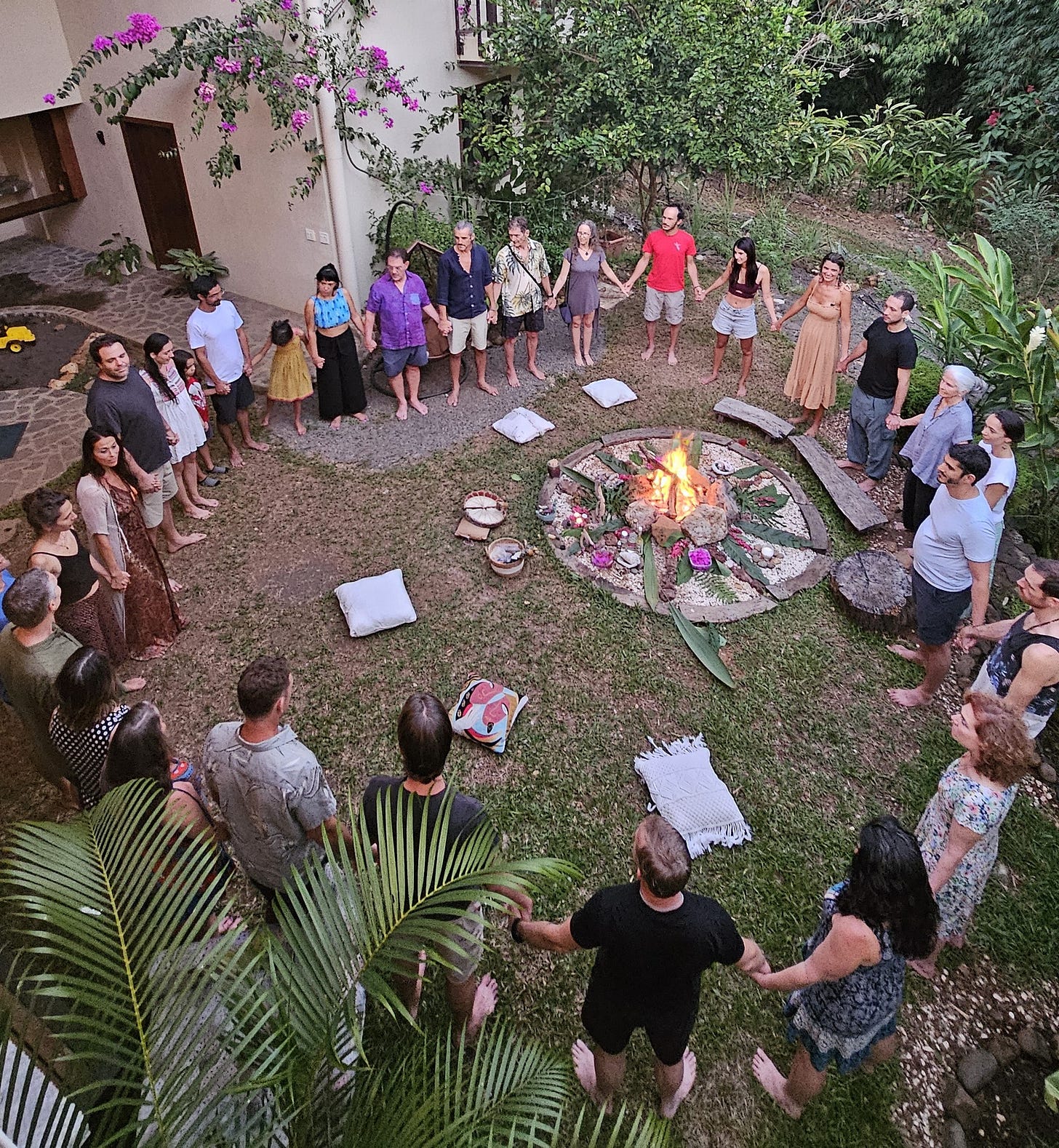
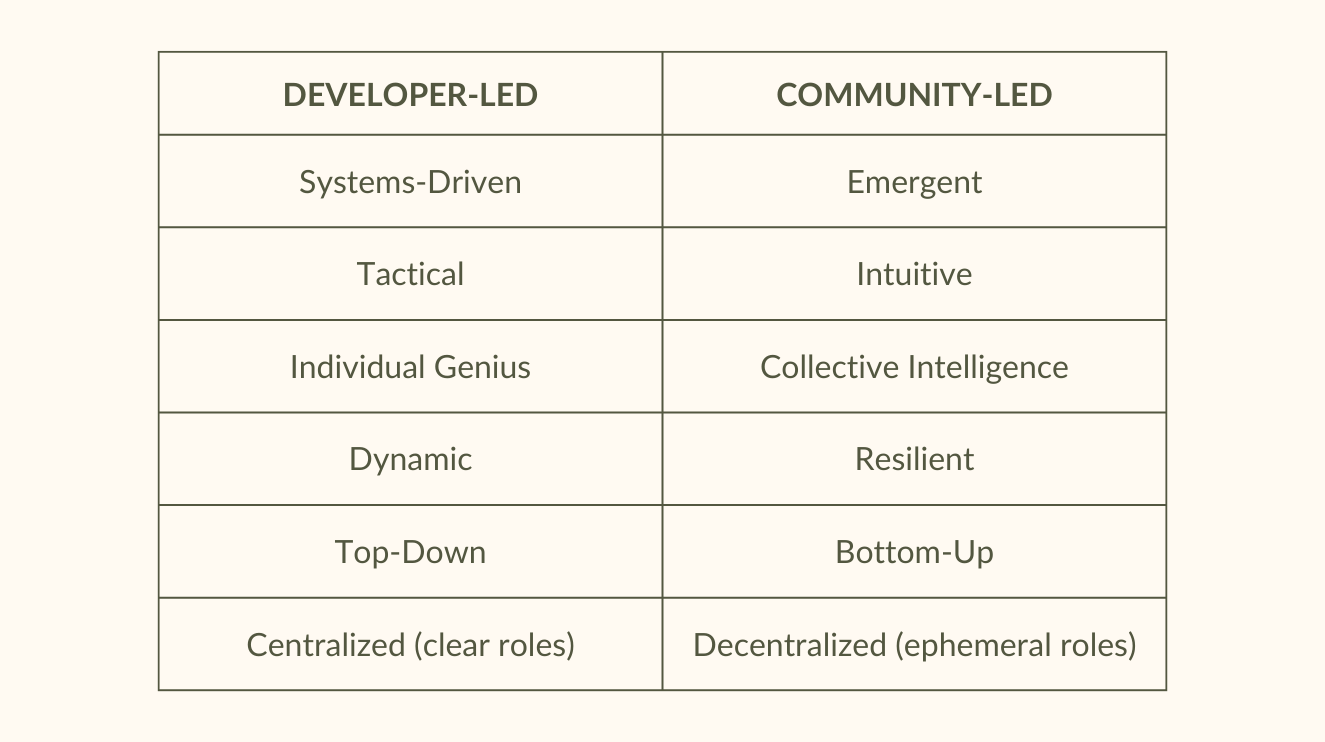




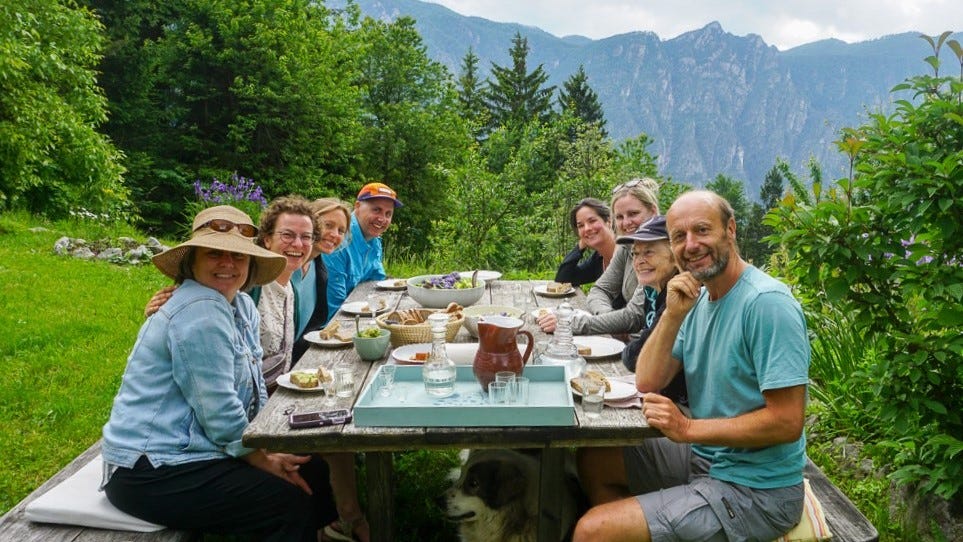
This is a helpful overview, Nicole. I appreciate the breadth of your knowledge and experience.
I also appreciate that you don't strongly advocate one approach over the other. Collectively, we have so much to learn about what can work and which approaches or elements are less likely to succeed.
As someone who followed discussions about new community structures in the '60s and '70s, I'm happy to see this topic being revived and taken seriously after what seemed like a very long hiatus.
We urgently need this kind of experimentation. Regenerative communities may become the lifeboats for a status quo that's quickly taking on water.
great article. i guess it depends very much on the people involved, their backgrounds and how they like to work. for our project it was clear that we would go with the developer approach and it has worked very well so far...